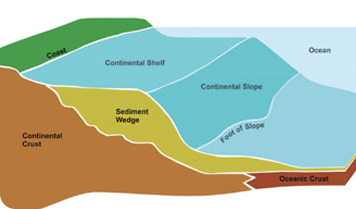Geo-#giroditalia2023 - Stage 13. Today, we recommend the entire peloton to join the grupetto and look around: the Giro organization prepared a fantastic geological excursion! The race will lead from Adria to the 'Penninic Front' of the Central Alps, a former subduction zone! 

The Alps are piled-up rock packages of a few km thick that were offscraped from the European plate that subducted below Adria. The riders will cross remnants of two oceanic basins (the blue colors) and a small continent (the 'Brianconnais', in orange). 

Before these remnants were folded up in the Alps, they covered an area of hundreds of kilometers wide, and we will ride in sequence from Adria to the Piemonte-Ligurian ocean, to the Briançonnais continent, to the Valais Ocean, and end on the slope of Europe! 

The remnants of these oceans and continent were in the Alps buried deeply into the sudbuction zone! There, they formed 'eclogites', which formed up to 100 km deep, full of red garnet minerals, under high pressures. Let's see which of the GC guys will do well under pressure today! 

• • •
Missing some Tweet in this thread? You can try to
force a refresh

 Read on Twitter
Read on Twitter









